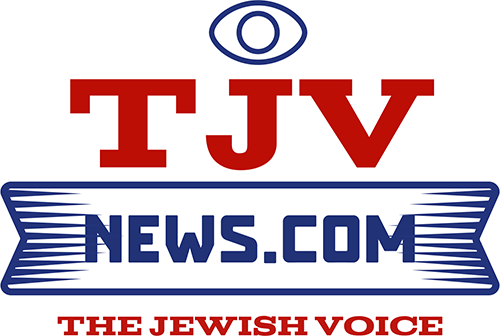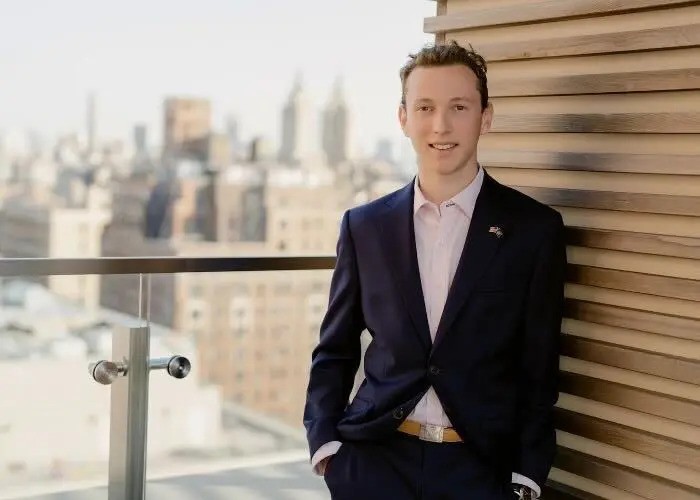|
Getting your Trinity Audio player ready...
|
Courage Amidst Conflict: Maximillian Meyer’s Stand Against Anti-Semitism at Princeton University
Edited by: Fern Sidman
Amid the historic archways and tranquil courtyards of Princeton University, a concerning wave of anti-Semitism has unsettled the storied Ivy League institution, challenging its commitment to diversity and safety. According to recently published report in the New York Post, at the heart of this turbulence is Maximillian Meyer, a 19-year-old Jewish student who has become both a symbol of resistance against anti-Semitism and a target for his stance.
Maximillian Meyer’s ordeal began in the aftermath of the Hamas terrorist attack on October 7, when the normally peaceful campus climate shifted dramatically. Meyer recounts the shock of seeing Hezbollah flags—a symbol associated with the designated terrorist organization—on campus, an emblem he never expected would appear in such an esteemed academic setting, as was reported by the Post. This event was a jarring signal to many Jewish students, including Meyer, that the atmosphere at Princeton was changing.
Meyer’s personal challenges have been significant. He has faced physical confrontations, including being shoved by a student who supports terrorist ideologies. Furthermore, the Post report indicated that his academic focus has been disrupted by the constant presence of anti-Semitic chants and terrorist imagery around campus, contributing to a sense of insecurity and alienation.
Despite these adversities, Meyer has been a vocal advocate for the Jewish community at Princeton. His efforts to rally his peers began quietly but grew in intensity as he organized groups to attend school council meetings, participate in counter-protests, and voice a pro-Israel stance, as was noted in the Post report. Meyer articulated a message of unity and defiance, emphasizing that no amount of provocative chants could undermine the spirit or significance of the Jewish students at Princeton. This initial gathering marked a significant moment of mobilization, asserting a collective Jewish presence in the face of growing hostility.
These activities have not only highlighted the issues at hand but have also tested the bonds of friendship and alliance within the university.
The situation reached a critical point when Meyer learned of plans to establish a Columbia-esque encampment at Princeton. Viewing this as a potential escalation of the tensions already present, he issued a call to action, urging his fellow students to stand united in opposition to what he views as a spreading of harmful and divisive sentiments on campus, according to the information in the Post report.
As the day unfolded, Meyer was confronted with the harsh reality of anti-Semitic rhetoric permeating his campus—echoes of what had been happening at other universities, the report in the Post said. Chants calling for an “intifada revolution” and the display of terrorist imagery deeply disturbed him, signaling that what he had initially faced was not an isolated incident but part of a broader, more alarming trend. This escalation prompted Meyer and others to recognize the need for a more organized response to anti-Semitism at Princeton.
The establishment of the encampment became a turning point for Meyer and his peers. Initially, only a handful of students stood with him. However, as the situation intensified, more Jewish students joined, bolstered by Meyer’s leadership and resolve. Indicated in the Post report was that the numbers grew, reflecting a rising concern and a collective willingness to stand up against anti-Semitism. Meyer’s approach—directly naming and confronting anti-Semitic actions and rhetoric—resonated with many, helping to galvanize a stronger, more visible Jewish student movement.
Meyer’s strategy extended beyond protests and public demonstrations. When the Princeton University Student Government called for a last-minute vote to potentially condemn the arrests of campus demonstrators—a motion that worried some about possible extreme language—Meyer was prepared, as was revealed in the Post report. He organized a significant turnout at the meeting, ensuring that the voices of Jewish students were heard and considered. This show of force was crucial in influencing the discussion and ensuring that any statements made did not further exacerbate tensions or bias against the Jewish community.
The atmosphere at Princeton grew more charged when protesters occupied Clio Hall. In response, Meyer took a stand outside the building, using a megaphone to demand that the university enforce Title VI regulations, which protect individuals from discrimination based on race, color, or national origin in programs or activities receiving Federal financial assistance, according to the information provided in the Post report. During this confrontation, the intensity of the situation became apparent when a protester physically shoved Meyer and screamed in his ear.
The situation reached a personal climax following an unsettling encounter with Professor Max Weiss. The Post reported that after Meyer publicly criticized a poem Weiss read at a pro-Palestinian demonstration as “anti-Semitic” and heckled him during a speech, Weiss approached Meyer in a manner that was caught on camera and described by Meyer as “unnerving.” The professor’s greeting, “Hi Maximillian, it’s lovely to meet you finally,” accompanied by a glaring look, highlighted the tense and confrontational atmosphere enveloping campus relations.
The situation intensified when Meyer was handed a copy of the poem “I Am You” by Palestinian writer Refaat Alareer. The poem, which Weiss has read multiple times at campus demonstrations, sharply criticizes the transformation of Jews from “victims” to “victimizers,” a narrative that deeply troubled Meyer, as per the Post report. With “Free Palestine” scrawled across the poem handed to him, Meyer interpreted this gesture as a threatening message, signaling that his outspoken stance would lead to continuous surveillance and opposition from certain segments of the campus community.
Being at the center of such a fervent debate has taken a significant toll on Meyer. He describes the impact of the ongoing campus demonstrations and the anti-Semitic undertones he perceives in them as “all-encompassing,” the Post report said. The stress and constant focus on these issues have profoundly affected his ability to concentrate on his studies, a sentiment that reveals the deeper personal struggles faced by student activists who challenge prevailing campus sentiments.
Meyer’s activism has reshaped his social landscape significantly. “When you speak up in the way that I am you quickly learn who your true friends are, and sometimes they come from the most unexpected of places,” Meyer shared with The Post. This experience has called attention to the complex interplay between personal convictions and social relationships, revealing the supportive—and sometimes surprising—networks that emerge during times of conflict.
As Meyer continues to navigate his challenging role as a spokesperson for Jewish students at Princeton, his experiences offer valuable lessons on the importance of resilience, advocacy, and the pursuit of dialogue in the face of adversity. Universities across the nation watching Princeton’s handling of these tensions may find themselves reassessing how they cultivate an environment of respect and understanding among a diverse student body. The story of Maximillian Meyer is a call to all stakeholders in educational institutions to strive for campuses where free speech is upheld, and all students can pursue their academic and personal growth without fear.





